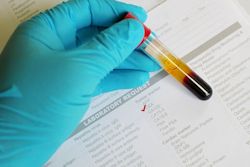Bloodborne Pathogens (BPP)
The Standard
OSHA's Bloodborne Pathogens standard (29 CFR 1910.1030) is designed to protect laboratory employees and others from the health hazards of exposure to bloodborne pathogens.

Employers are subject to the BBP standard if they have workers whose jobs put them at reasonable risk of coming into contact with blood or other potentially infectious materials (OPIM).
These employers must develop a written Exposure Control Plan, provide training to exposed workers, and comply with other requirements of the standard, including use of Standard Precautions when dealing with blood and OPIM. In 2001, in response to the Needlestick Safety and Prevention Act, OSHA revised the Bloodborne Pathogens standard. The revised standard clarifies the need for employers to select safer needle devices and to involve workers in identifying and choosing these devices. The updated standard also requires employers to maintain a log of injuries from contaminated sharps.
OSHA estimates that 5.6 million workers in the healthcare industry and related occupations are at risk of occupational exposure to bloodborne pathogens, including HIV, HBV, HCV, and others.
All occupational exposure to blood or OPIM places workers at risk for infection with bloodborne pathogens. OSHA defines blood to mean human blood, human blood components, and products made from human blood.
Other potentially infectious materials (OPIM) include:
- the following human body fluids:
- semen
- vaginal secretions
- cerebrospinal fluid
- synovial fluid
- pleural fluid
- pericardial fluid
- peritoneal fluid
- amniotic fluid
- saliva in dental procedures
- any body fluid that is visibly contaminated with blood
- all body fluids in situations where it is difficult or impossible to differentiate between body fluids
- any unfixed tissue or organ (other than intact skin) from a human (living or dead); and
- HIV- or HBV-containing cell or tissue cultures, organ cultures, and HIV-or HBV-containing culture medium or other solutions; and blood, organs, or other tissues from experimental animals infected with HIV or HBV.
Knowledge Check Choose the best answer for the question.
6-1. OSHA defines blood to mean _____ blood, its components, and its products.
You forgot to answer the question!
